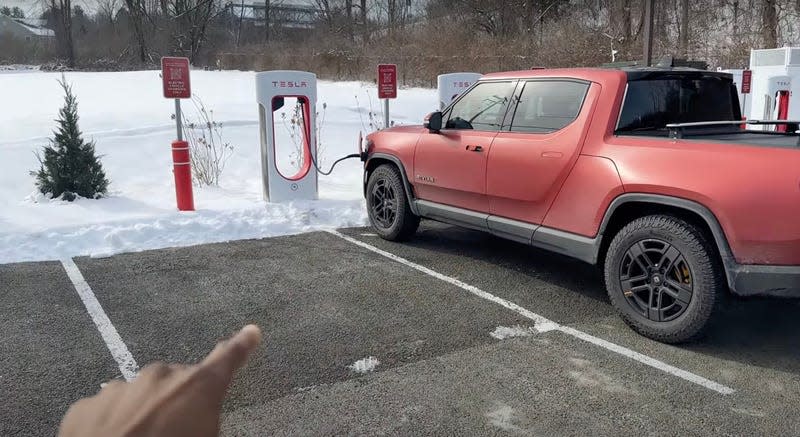What It's Like to Charge a Non-Tesla at a Tesla Supercharger

One of the biggest issues facing the potential EV adopter these days is that the national charging networks are not great. Whether it’s needing half-a-dozen apps to pay for charging, or finding that three out of four chargers at a location are broken, topping up your battery on the go is hardly a seamless experience – unless you own a Tesla, that is.
Despite what evangelists will tell you, Tesla has plenty of problems with its vehicles, but one area where Tesla is miles ahead of the competition is with its Supercharger network. The Tesla charging network in America is far and away the most comprehensive and reliable system available to EV owners, but until very recently, you had to have a Tesla to use it.
Read more
In early 2023, Tesla (thanks to some government funding) opened a pilot program allowing other brands’ EVs to use Supercharger stations. And while it’s still extremely limited in the number of charging stations, YouTuber Marques Brownlee found one near him and decided to try it out in a Rivian R1T for his car-oriented Auto Focus channel. His experience is surprisingly good, but not without its issues, as you’ll see.
Charging a non-Tesla at a Tesla Supercharger!
The biggest problem facing this new program is the layout of the Supercharging stations themselves. Because there is no standardized location for the charging ports on non-Tesla models, the stations could quickly find themselves clogged up with vehicles blocking unused plugs because their charging ports aren’t located on the left rear corner of the vehicle, as is the case with all Teslas. Tesla Superchargers also have relatively short charging cords, which exacerbates this issue.
Next, because Teslas operate on a now-slightly-antiquated 400-volt architecture, the amount of current that a Supercharger can deliver – even the latest and greatest version – is limited. This means that a Lucid Air or a Porsche Taycan, which can accept up to 350 kilowatts, will be limited to a slower charge at a Tesla plug.
Lastly, owners of non-Tesla models pay a higher per-kilowatt rate for charging at a Supercharger compared to Tesla owners. This was likely done to appease cranky Teslaphiles, who will undoubtedly be mad that their formerly walled garden is now open to anyone, making for an even longer wait for a charger in busy locations even longer.
We’ll keep an eye on this rollout, and the next time we have an opportunity to test the pilot program ourselves, you can bet we’ll be writing about it.
More from Jalopnik
Sign up for Jalopnik's Newsletter. For the latest news, Facebook, Twitter and Instagram.

 Yahoo Autos
Yahoo Autos 